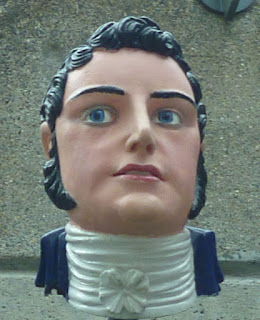Yes, at times it feels as if I should be trying to overcome a habit, and I'm wondering what you feel about this. Is there something wrong about using upper class protagonists in a romance?
A bit of background, because I think it's relevant. I was born and raised in England, then in my late twenties I emigrated with my husband to Canada.
I became a romance novelist in Canada, but sold my books to New York, as that's where the romance publishers were, and America is where the bulk of today's romance readers are. In literary terms, America is my heartland, with Canada second, as aristocratic historical romance is very popular there, too. England is my homeland, but for some reason historical romance in general, and aristocratic historical romance in particular, seems to be a tiny market here.
This puzzles me, as I developed my reading and writing tastes growing up in England, enthusiastically using the public library. The first romance I remember reading was The Scarlet Pimpernel, and then I moved on to the wonderful Georgette Heyer, whose books are full of the nobility, wealth and the "ton." I remember other authors, such as Paula Allardyce and Alice Chetwynd Ley , both almost contemporaries of Heyer. I know there were others back then. Any other names come to mind?
 |
| My first Heyer. The original copy. |
So where did this British enjoyment of dashing, high society historicals go? Over to the States, obviously, where they flourished, but why did they dwindle here? Why did so few British authors follow in the footsteps of Heyer, Allardyce et al? The obvious answer would be that publishers stopped publishing those books because the readers stopped buying them. Did they? If you're old enough, did you?
I can think of some other possible factors.

Or did something happen in British society to mean that readers simply weren't interested in "toffs" anymore. Why then the popularity of Downton Abbey? It seems to me that most people enjoy some stately home and lords and ladies fantasy fun now and then, but perhaps I'm wrong.
No toffs, please. We're British?
Talking of stately homes, I'm part of a group anthology based on a glittering ball at a stately home in 1815. The characters range from a thief masquerading as a maid to the heir to an earldom, so there's something for everyone.
I'll give a copy of The Last Chance Christmas Ball to one of the commenters on this blog, randomly picked. So, British, American, Canadian or wherever, have your say.
Jo


















